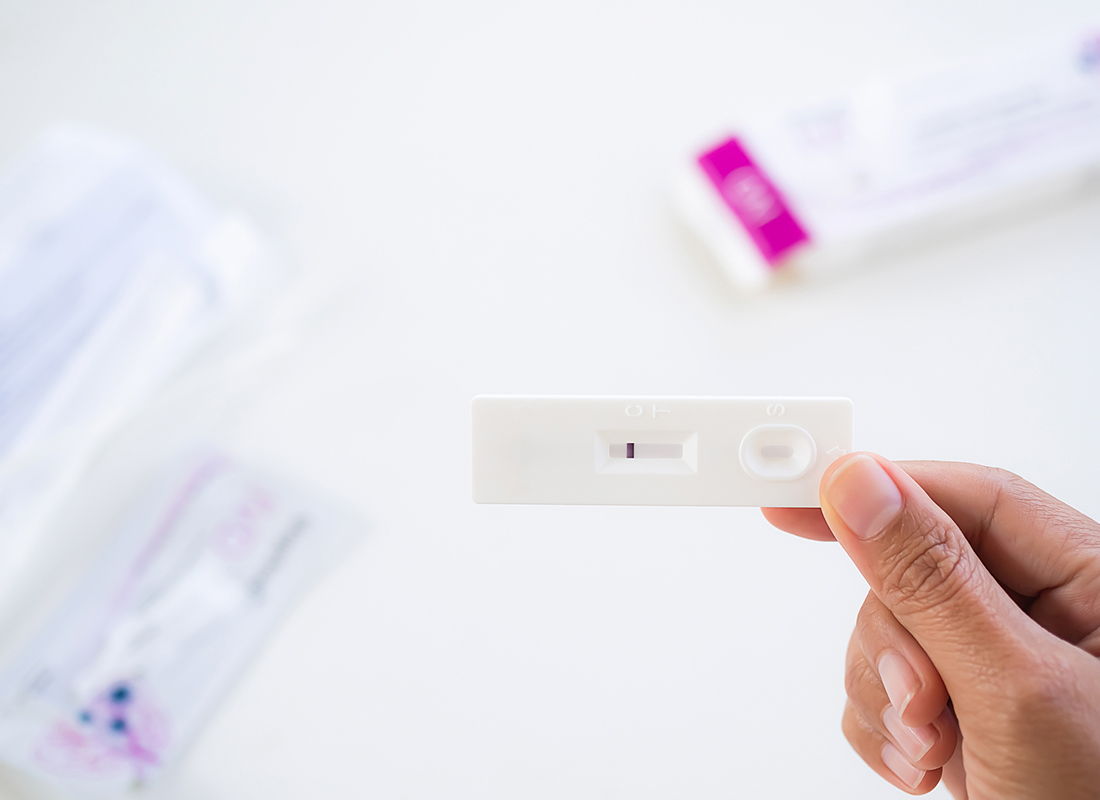Expert Q&A: Adapting to the Expanding Market of At-Home Testing
Medical director William G. Finn, MD, discusses key trends, challenges, and opportunities related to the expansion of at-home testing.

Continued growth within the market for at-home testing presents both opportunities and challenges for labs. William G. Finn, MD, medical director of Joint Venture Hospital Laboratories and past president of the American Society for Clinical Pathology (ASCP), discusses recent trends in at-home testing and how labs can adapt to the changing landscape, including the growing demand for real-time results.
Q: What are some notable recent trends in at-home testing?
A: At-home testing is familiar to most people via traditional products such as at-home pregnancy tests or glucose monitoring tests. But perhaps the highest profile development recently has been the explosion of at-home COVID testing. This trend has sparked interest in expanding at-home tests to include other common respiratory viruses, such as influenza viruses and RSV. There is also a growing trend toward at-home collection of samples for direct access testing and genetic testing, like Ancestry and 23andMe. These are not “at-home tests” in the true sense, but instead involve the at-home self-collection of samples for transport to testing laboratories.
Q: What are the key advantages of at-home tests?
A: Accessibility to testing, convenience of use, and rapid availability of results are key advantages of at-home tests for individual patients. This can afford substantial advantages for real-time disease monitoring and management, such as in the care and monitoring of diabetes via home glucose or home A1C testing. In settings such as the recent pandemic, this level of real-time accessibility and results can also provide considerable advantages to public health monitoring and interventions to help control breakouts and improve population health.
Q: Are there any notable disadvantages of at home-testing?
A: Test accuracy and precision can vary between different at-home testing methods. Another potential disadvantage is a lack of understanding among users of the medical context in which the tests should be performed and interpreted. We often think of tests as infallible indicators of disease or health, when in fact the sensitivity, specificity, and predictive value of results from even the highest performing at-home test depends heavily on pre-analytical considerations that not every at-home user will be able to appropriately apply. Additionally, the accuracy of at-home tests depends heavily on the user adhering closely to the manufacturer’s instructions for use. This may seem fairly basic, but surveys of point-of-care laboratories performing CLIA-waived tests consistently identify high percentages of tests that are not performed to manufacturers’ instructions.
Q: What opportunities and challenges do at-home tests present for labs?
A: Challenges include the shifting of lab testing from clinical laboratories to the use of at-home test kits. Opportunities include the continuous progress in laboratory testing methods to improve accuracy, efficiency, and real-time availability of results. Also, most laboratory errors occur due to preanalytical factors like use of expired test kits, lack of adherence to manufacturer’s instructions, and mishandling of collected samples, rather than due to flaws in the testing technology itself. The preanalytical steps involved in clinical laboratory testing are generally quite closely regulated. Conversely, at-home testing may be more prone to pre-analytical errors due to the lack of regulatory oversight of pre-analytical steps.
Q: Do at-home tests present issues with accuracy compared to lab-based testing?
A: This depends on the performance characteristics of an individual test, as well as on the extent to which the user adheres to the manufacturer’s instructions. Commonly used at-home tests like pregnancy tests or finger-prick blood glucose monitoring are often highly accurate and reliable. Other tests, such as at-home COVID tests, may have variable levels of accuracy based on situational factors.
Q: What are some of the business implications for labs?
A: Labs have long had to compete with point-of-care alternatives to the testing they perform within their own walls. Often the business advantage to a laboratory is that labs tend to use more reference method-based testing and test closer to “gold standard” than at-home tests. However, as point-of-care technology improves, this gap continues to narrow, and the advantage to labs becomes less evident.
Going forward, clinical laboratories will have to continue to adapt to the more real-time nature of laboratory testing. It is likely that the trend toward at-home testing will be complemented by the increased availability of lab testing through improvements in clinical laboratory operational efficiencies, shorter turnaround times for testing, the use of satellite lab sites, pharmacy-based lab testing, and more. This will result in improved service, and while labs will have to adjust their business practices to adapt, they will likely maintain their place as the principal sites for performing lab tests.
________________________________________________________________________________________________________________________________________
William G. Finn, MD, is medical director of the Joint Venture Hospital Laboratories (JVHL) and a past president of the ASCP. He received his medical degree from the University of Michigan, and completed his pathology training at Northwestern University. He is board certified in anatomic and clinical pathology, and also in hematopathology. He worked as an academic clinical hematopathologist for many years at Northwestern and at the University of Michigan, where he served as clinical professor of pathology and associate director of clinical laboratories until 2011. From 2012 to 2022, he served as medical director of Warde Medical Laboratory, and as a partner at Integrated Health Associates. He has numerous peer-reviewed publications in clinical pathology, hematopathology, and flow cytometry, and he has served on the governing boards of several pathology organizations.
Subscribe to Clinical Diagnostics Insider to view
Start a Free Trial for immediate access to this article